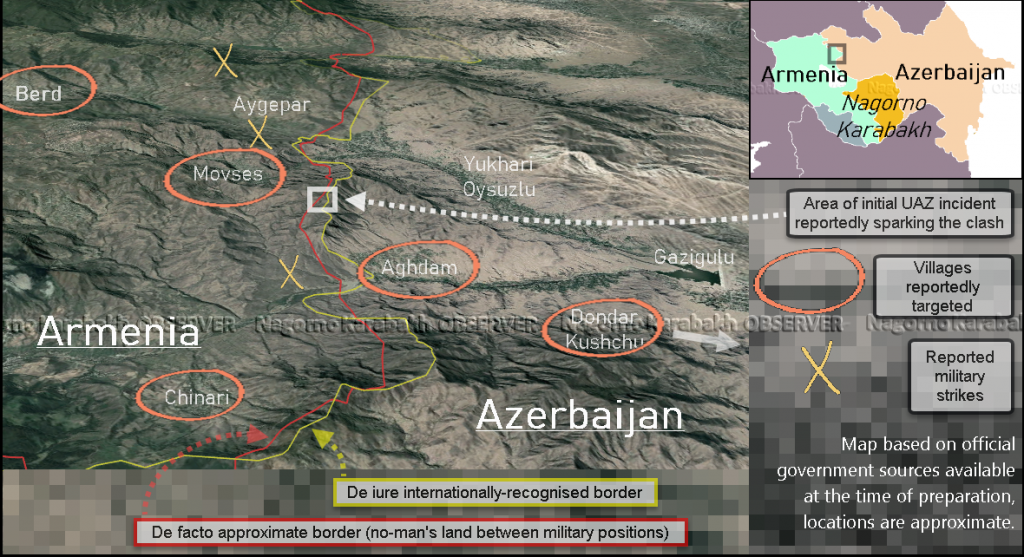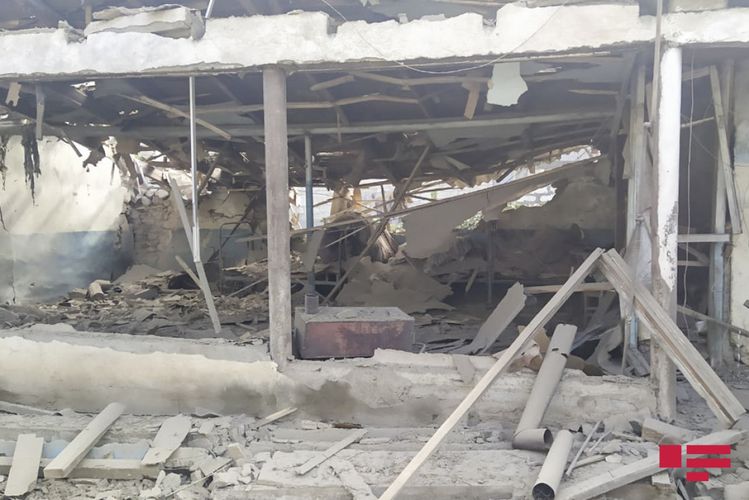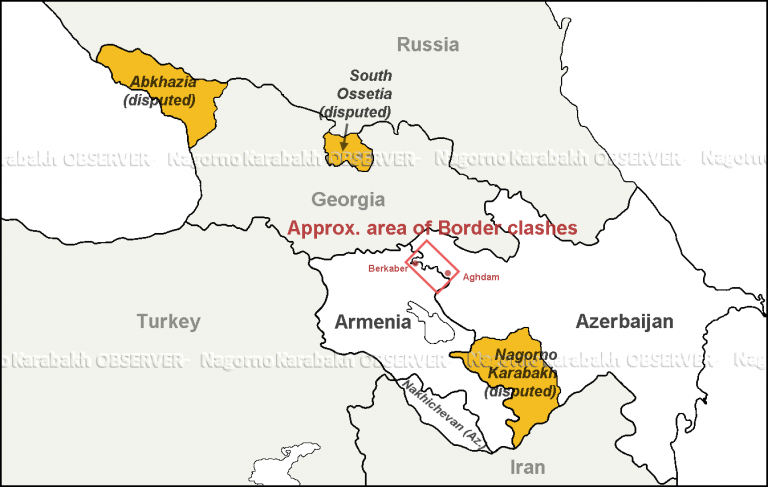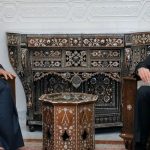Russia seeks to ramp up conflicts in the South Caucasus, provoking against Azerbaijan.
Skirmishes between the servicemen of Armenia and Azerbaijan in Tovuz district began on July 12, leaving three Azerbaijani soldiers killed and several more wounded.
The current outbreak of hostilities is the worst since 2016.
Yerevan said the outbreak had been triggered by Azerbaijan’s military truck attempting to break through the border.
Then, the sides exchanged a series of strikes, leaving both countries with casualties, including some of the top militaries. Azerbaijan’s Defense Minister confirmed the Armenian shelling killed Polad Khamishov, national armed forces 3rd corps chief of staff, and Colonel Ilgar Mirzaev, the 3rd corps artillery commander.
It might be concluded with high degree of probability that Azerbaijan’s top military losses stem from the intelligence data fed to Armenia and assistance in weapon guidance by the Russian troops stationed there.

The Armenian Army is currently in the hollow of Russia’s hand under C2 system of the Russian command. The Armenian territory is in the A2 / AD zone, established and controlled by Russia.
On July 14, Russia’s intelligence forces operating in the region staged an unauthorized rally in Baku, where people demanded to resume the war with Armenia over Karabakh. Tovuz district does not border on Nagorno-Karabakh, so that armed conflict cannot provoke escalation in Nagorno-Karabakh, not being intervened in from without.
Unrest in Azerbaijan serves Russia’s interests, as Baku carries energy and logistical weight in the EU and the U.S. scenarios. Azerbaijan, a former Soviet republic, has been trying to act independently of Moscow and engage substantively with Brussels and Washington for a long time.

The Kremlin’s strategy in the South Caucasus is multi-tasking and covers several countries as intelligence targets.
Russia is seeking to draw Turkey into the conflict between Armenia and Azerbaijan. The Kremlin is trying to weaken Ankara by encouraging the latter to become more active and deeply involved in operations in Syria and Libya, and now in the South Caucasus. Thus, Moscow is pushing Erdogan out of the Black Sea to backwater: the Mediterranean.This strategy is focused on reducing Turkey’s activity in the Black Sea and bolstering Russia’s influence there as much as possible. Turkey’s involvement in the conflict between Armenia and Azerbaijan will push Russia for dispersing the Turkish troops geographically, making that more expensive for the Turkish budget. Meanwhile, the Kremlin is testing Turkey’s military capacity, its ability to deploy quickly and conduct hostilities, as well as the readiness of NATO countries to support an ally in case of a confrontation with Moscow. This issue is a key intelligence topic for Russian intelligence in the Baltic direction strategy.
On July 15, Russian helicopters from the 102nd base of the RF Army in Gyumri were spotted near the Armenian-Turkish border. They appeared after the Turkish Defense Minister Hulusi Akar said that Ankara was all for Azerbaijan and placed full responsibility for the incident on Armenia.
This fact does not indicate preparation for clashes with Turkey. The Kremlin is more than likely showing its readiness to side with Yerevan if the conflict escalates. Russia has been long trying to ignite the situation where Turkey would not receive support under Article 5 of the NATO Treaty. Moscow considers Ankara to be the weak link of the Alliance, and, taking into account Erdogan’s ambitions and psychological characteristics, deems it possible to initiate Turkey’s withdrawal from the Washington Treaty Organization if it does not secure the necessary support when it comes to the point.
The conflict in Tovuz district might be related to Russians’ activity in Georgia.
On May 30, Georgia’s State Security Service (SGB) media office said a group of individuals had been trying to drive a wedge between ethnic Azerbaijanis living in Georgia and Georgians. The problems existing in the regions of Kvemo Kartli and Kakhetia are used to aggravate tension between the ethnic groups, the office says.
In Kakhetia, the second largest region where Azerbaijanis live, there is a point of notorious border conflict between Georgia and Azerbaijan – David Gareja monastery complex, the territory around being a matter in dispute between the countries. This conflict resumed in 2019. Political statements were followed by clashes at the border, leaving an Azerbaijani border serviceman disarmed by unidentified Georgians.
The “Alliance of Patriots of Georgia”, the pro-Russian party in Georgia is at the forefront of this border conflict, adding to its escalation.
Here, Moscow is seeking to return Georgia under the political hand by weakening it and breaking up the NATO integration and EU rapprochement course.
Consequently, the facts speak for Russia to trigger the conflict between the Caucasian states. Warming up interethnic conflicts is necessary for Russia to create puppet republics – an active remedy, the Kremlin’s stock-in-trade in many regions of the world, and the Caucasus is not an exception.




